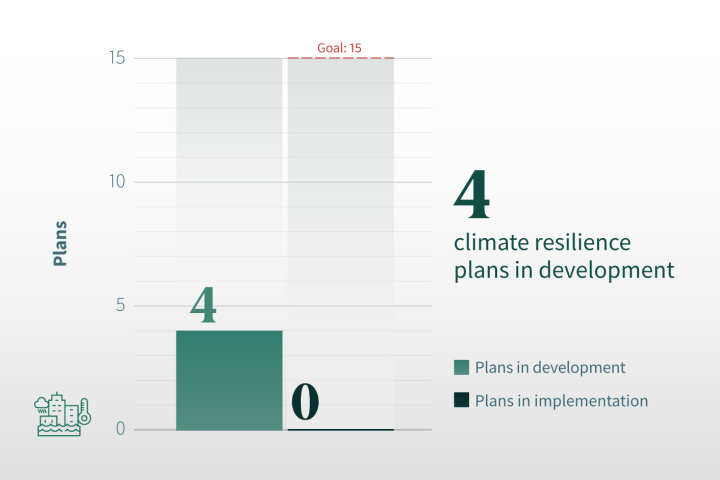By 2035, support completion and commence implementation of at least 15 community-based climate resilience plans across Greater Philadelphia.
Community-based planning can support efforts to build climate resiliency as residents and citizens most vulnerable to the effects of climate change bring relevant and direct experience to the process.
Science indicates that future climate change impacts in Philadelphia will be very significant, particularly with respect to heat and flooding. This will be particularly evident for residents in communities and neighborhoods that have withstood generations of discrimination and disinvestment.
Consider the data:
- Mean annual temperatures in the Greater Philadelphia region are projected to increase by up to five degrees by 2050, and the number of days per year with temperatures exceeding 100 degrees Fahrenheit could increase from a historical average of 0.3 to as many as 17 by the end of the century [1].
- During extreme heat, average temperatures in Philadelphia can be 12 degrees warmer than suburban and rural areas, and neighborhoods that lack green spaces and adequate street trees – which are disproportionately low-income and of-color communities – can be 22 degrees hotter than other neighborhoods [2].
- As a result of climate change, Philadelphians should expect to see an up to 12% increase in mean annual precipitation by 2050, with a 97% chance of at least one flood over four feet during that time [3].
- The abundance of industrial land near the Delaware and Schuylkill rivers increases the likelihood of toxic floods and the spread of heavy metals and other toxins in the soil. Over 100 brownfields and chemical storage tanks exist in disinvested communities and communities of color, that are also prone to flooding [4].
- Higher temperatures can lead to increased asthma rates. The Asthma and Allergy Foundation ranks Philadelphia the eighth most challenging place to live with asthma out of the nation’s 100 largest cities. Black children 19 and under are hospitalized due to asthma at a rate five times their white counterparts [5].
Given these facts, we are seeking to help communities prepare for the climate changes that are happening. With such plans, Philadelphians will be better positioned to thrive in our changing world.
In advancing this objective, we recognize that there are many ways organizations can help communities develop resilience plans including ways to adapt to climate change and planning for recovery efforts after a climate event. We are seeking ideas from organizations in our region about how to do this most effectively, particularly in communities seeing the biggest impacts of a changing climate.
Notes:
Progress Toward This Objective

